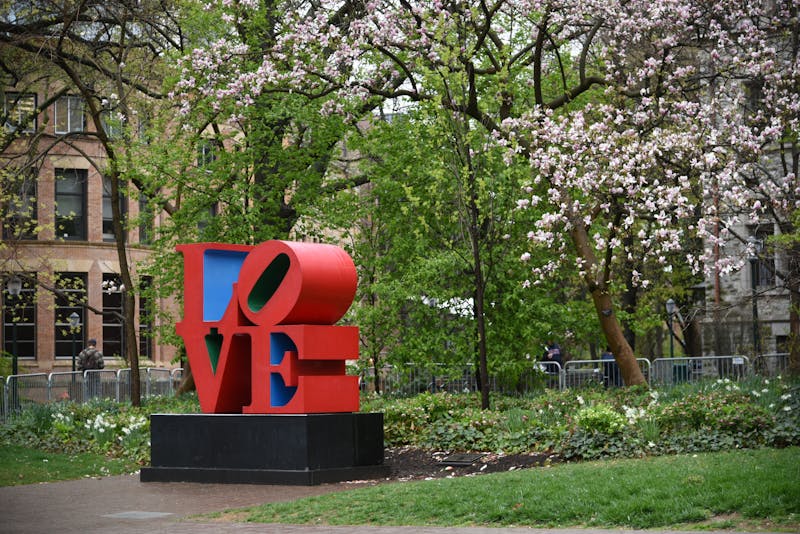T his past Saturday evening was one of the best nights of my life. I prepared to take the stage with one of my best friends. Surrounded by people that I love, I secured my flower crown to my wig, adjusted my dress and walked down the aisle. This was my first time in a drag performance, a part of the QPenn annual celebration of LGBTQ culture at Penn.
Many people, even people in the LGBTQ community, understand drag in an oversimplified way: A man “dresses up like a woman,” or a woman “dresses up like a man.” However, for me and for others in the drag show and who do drag all over the world, it is so much more than that.
Drag takes on many diverse forms. Historically, drag has played an absolutely integral part in the LGBTQ community in America. The riots and activism that brought attention to issues of gender and sexuality in the 1950s and 1960s were started by trans and gender non-conforming people, particularly transgender women of color and some of whom identified as drag queens.
For some, it’s about the aesthetic. College sophomore Gabriel Ojeda-Sague , who performed in the QPenn Drag Show as the fabulous Hadeeja Souffle, says that he’s always been drawn to drag because of the things that you can do to the body to create an aesthetic piece.
“For me, drag has always been this amazing space for gender play and manipulation of the body,” he said. “There’s a wonderful tradition out there of people doing incredible things with drag that get out of this female impersonation stereotype. You have these moments where you’re just making an art upon the body.”
For many trans and gender non-conforming people, drag is used to express and experiment with their gender in a way that is celebrated. For me, the actual lip-sync performance that night was only one tiny part of my experience. Expressing femininity in a way that I have been actively and passively told that I am not supposed to has been such a powerful and important experience. It’s helped me to understand my gender and myself in ways that I have previously not been able to.
However, it is important to recognize that not all drag queens are trans or gender non-conforming. Many drag queens are cisgender men who dress femininely for performance purposes, and this type of drag is what most people understand drag to be today. Unfortunately, this type of drag can often express itself through very misogynistic and transphobic stereotypes.
One of the most popular drag queens in the world is RuPaul, whose hit show “RuPaul’s Drag Race” (now in its sixth season) has come under fire (for good reason) for many of these issues. RuPaul and many of the other drag queens on the show regularly use transphobic slurs and misogynist language and engage in discussion of gender expression in ways that rely heavily on stereotypes and leave little to no room for trans identities. Despite the fact that at least four of the contestants on the show (including the amazing Carmen Carrera) have come out as transgender women, RuPaul continues to defend his use of this type of transphobic language.
The idea of drag as “dressing up like” or “impersonating” a gender reinforces the idea that there is a particular way that people of certain genders should dress. This idea goes against what most trans activists believe to be true, which is that all people should be able to express themselves in whatever ways they want without regard to their gender or gender identity.
However, we do not live in a society that reinforces this belief, so it is important to recognize that, unfortunately, there are certain ways of dressing that people associate with gender. This is why we see systematic violence against transgender people, especially transgender women of color, who traverse these boundaries every day by expressing their truth in the way that they identify and put themselves out there in the world.
The LGBTQ community lifts up drag queens as some of the most beautiful faces of the community. It is true that drag is, and probably always will be, an integral part of the LGBTQ movement. However, we must remember that for trans people, gender expression is so much more than just a performance. We need to fight for and celebrate trans people with even more force and through real actions that can make our world safer and more welcoming of gender diversity.
Roderick Cook is a College sophomore from Nesquehoning, Pa. Their email address is rodcookdp@gmail.com.
The Daily Pennsylvanian is an independent, student-run newspaper. Please consider making a donation to support the coverage that shapes the University. Your generosity ensures a future of strong journalism at Penn.
DonatePlease note All comments are eligible for publication in The Daily Pennsylvanian.








